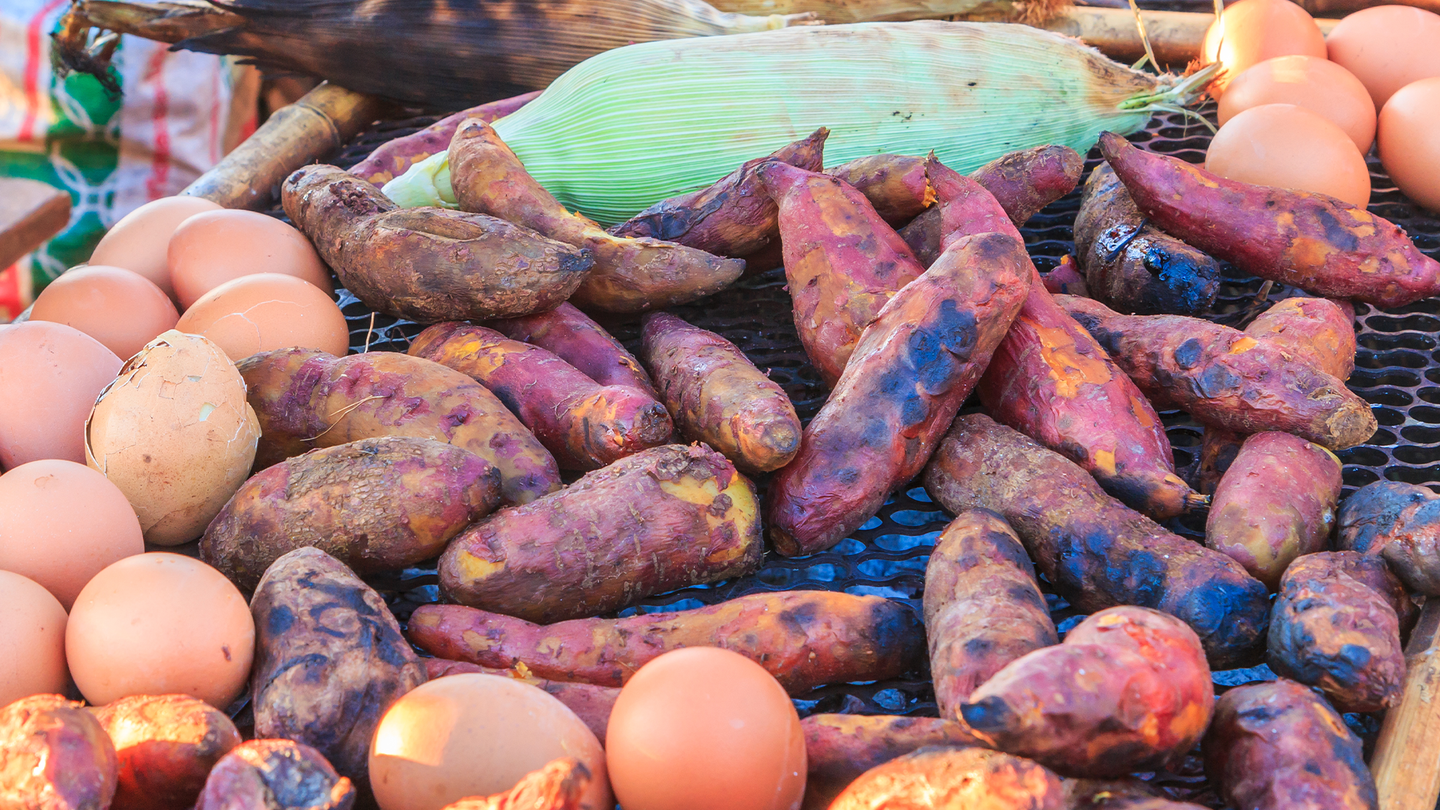Mummified poop reveals a diverse ancient Caribbean diet
Sweet potatoes, papayas, and maize were all on the menu.

The world of mummified poop, or coprolites, offers a fascinating look into the parasites and snacks that pass through people and animals’s digestive systems. Seeing what foods were around can give archeologists an idea of the landscape hundreds of years ago. A new DNA analysis of mummified poop from two pre-Columbian Caribbean cultures reveals that they ate a wide variety of plants, tobacco, and even cotton. The findings are described in a study published October 11 in the open-access journal PLOS ONE.
[Related: Ancient poop proves that humans have always loved beer and cheese.]
The study looked at the coprolites from two pre-Columbian cultures called the Huecoid and Saladoid. An earlier study of centuries old fecal matter supports a hypothesis that the Huecoid likely originated in the Andes Mountains in present-day Bolivia and Peru before migrating among different islands in the Caribbean around the third century CE. The Saladoid people likely originated in modern day Venezuela and traveled to the Puerto Rican island of Vieques by the sixth century CE.
“Archeologists at the University of Puerto Rico dedicated over 30 years to digs on the Island of Vieques, finding the coprolites along with many other priceless artifacts,” Gary A. Toranzos, study co-author and environmental microbiologist/paleo microbiologist at the University of Puerto Rico, tells PopSci. “One would consider finding coprolites easy [since] they are deposited every day. However, most people will not recognize them and the conditions for coprolite formation need to be very specific.”
Coprolites need dryness to preserve the DNA and it was believed that this preservation was impossible due to the Carribbean’s humid climate.
“Narganes and Chanlate proved them wrong,” Toranzos says.
In the study, Toranzos and microbiologist Jelissa Reynoso-García carefully extracted and analyzed plant DNA from ten coprolite samples from the La Hueca archaeological site in Puerto Rico. They then compared the extracted plant DNA against a database of diverse coprolite samples and contemporary plant DNA sequences.
They found that the Huecoid and Saladoid peoples enjoyed a diverse and sophisticated food system, including sweet potato, wild and domesticated peanut, chili peppers, a domesticated strain of tomatoes, papaya, and maize. Their analysis also detected tobacco, potentially due to chewing tobacco, pulverized tobacco inhalation, or tobacco as a food additive for medicinal and/or hallucinogenic purposes.
[Related: What prehistoric poop reveals about extinct giant animals.]
Surprisingly, cotton was also detected in the samples. This could have been from ground cotton seeds used in oil or because women wet the cotton strands with their saliva leaving strands in the mouth while weaving.
Additionally, they did not not find evidence of cassava consumption. Cassava is a root vegetable also called yucca and manioc. The authors were surprised that there weren’t any traces of it in these samples, as this plant was often reported as a staple food in the pre-Columbian Caribbean in sources from the time.
“Cassava DNA was not found, likely because of the extensive preparation of the cassava powder to get rid of toxins in the plant,” says Toranzos.
Different food preparation techniques means that each coprolite sample is only a snapshot of what one specific person had been recently eating. The authors were only able to identify plants that are in current DNA sequence databases and plants that are now-extinct, rare, and in non-commercial crops were not detected. While it’s likely that the Huecoid and Saladoid people ate other plants or fungi than the study notes. The authors hope this analysis gives further insight into the lives of pre-Columbian people of the Americas.
“Even poop is a great resource for agriculture, and many other things,” Toranzos says. “Now we see they are a great way of obtaining information from those who lived thousands of years before us.”